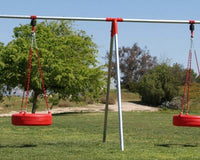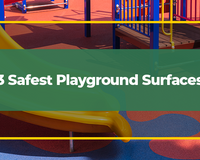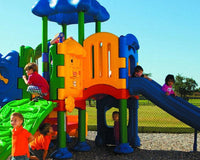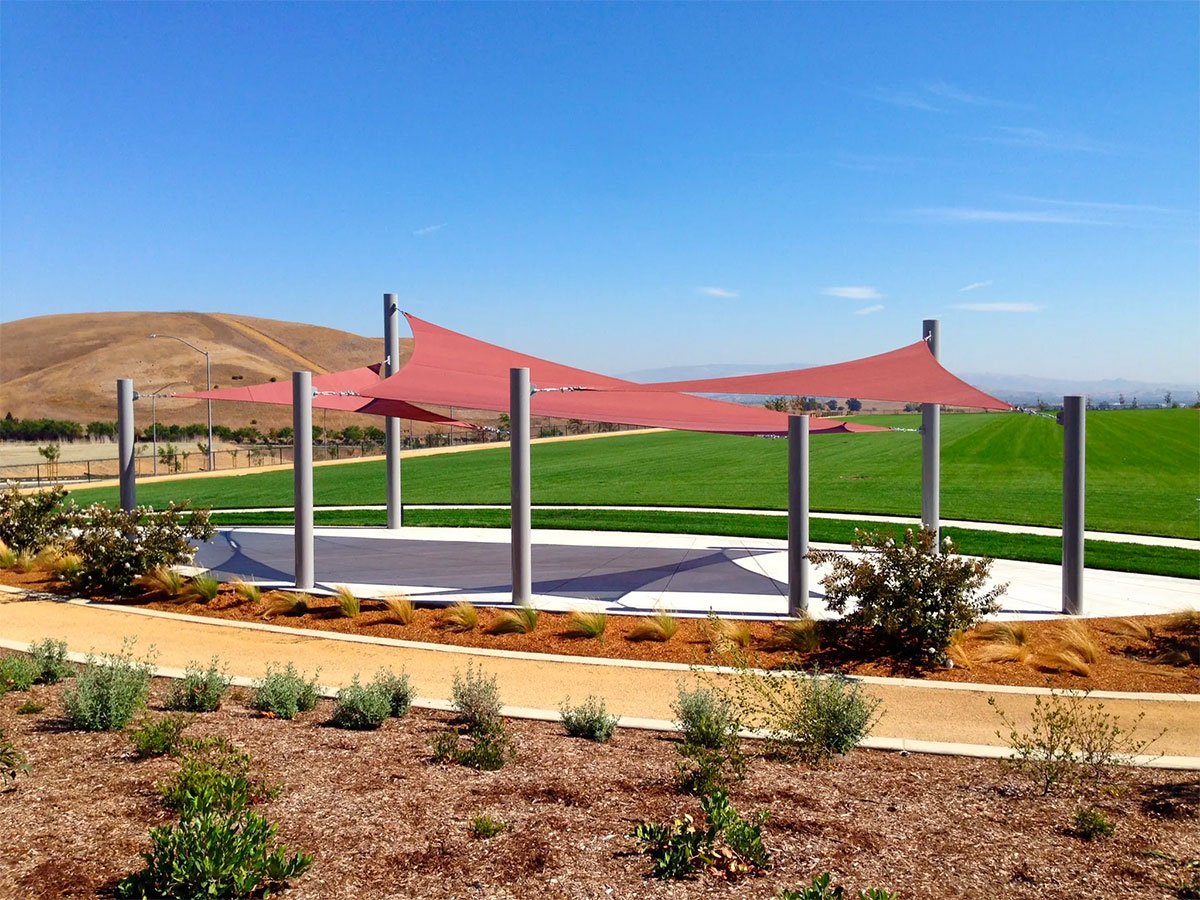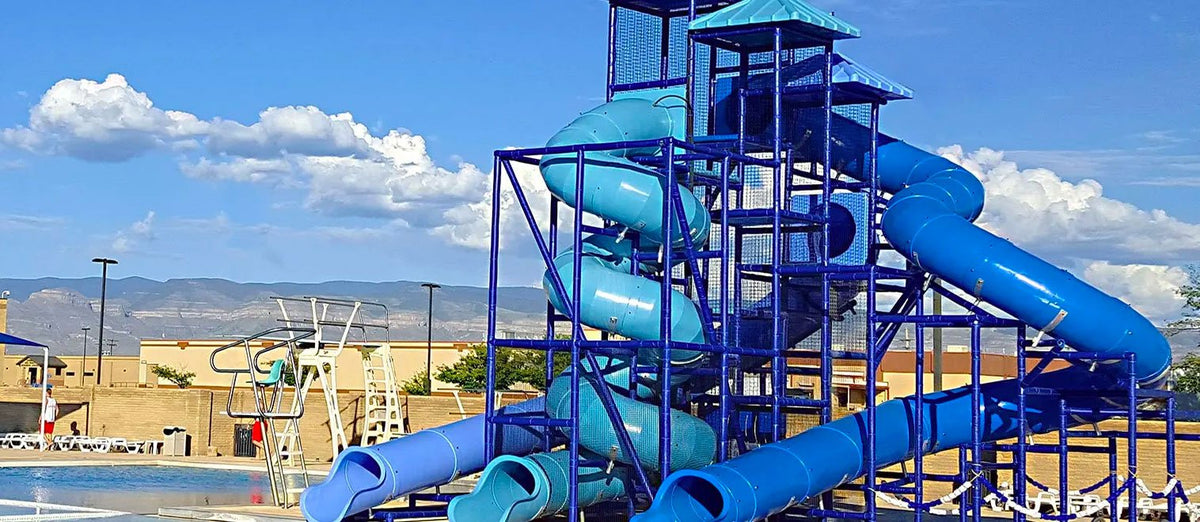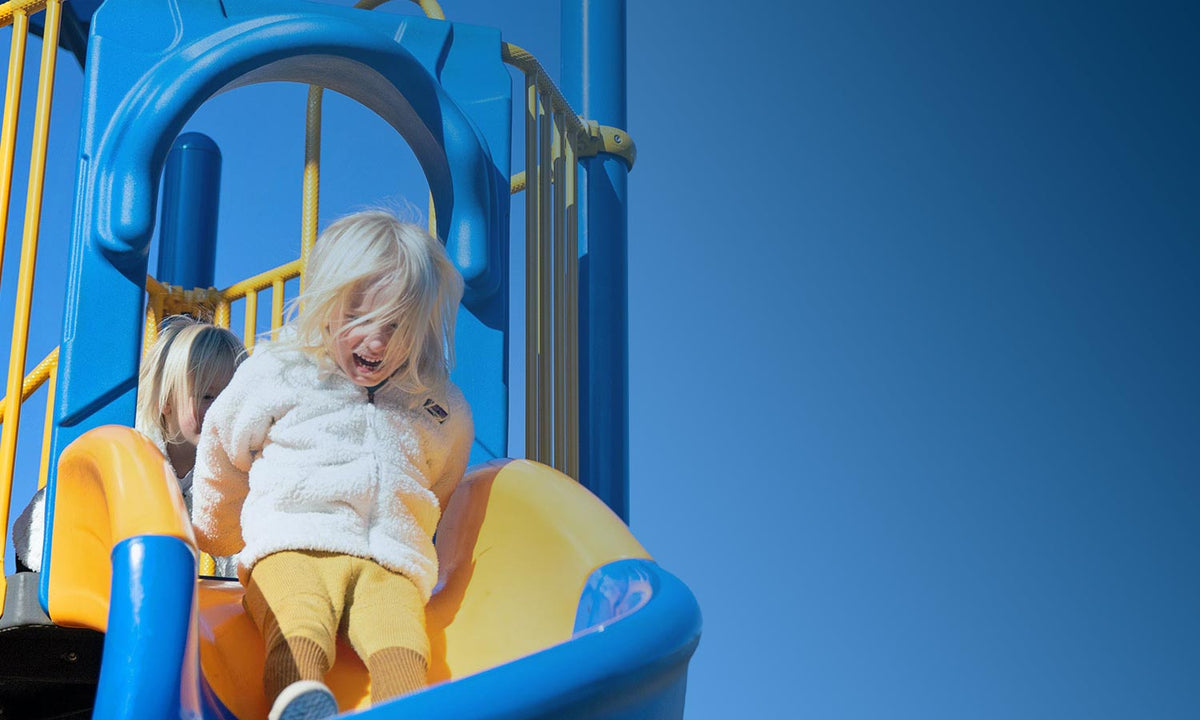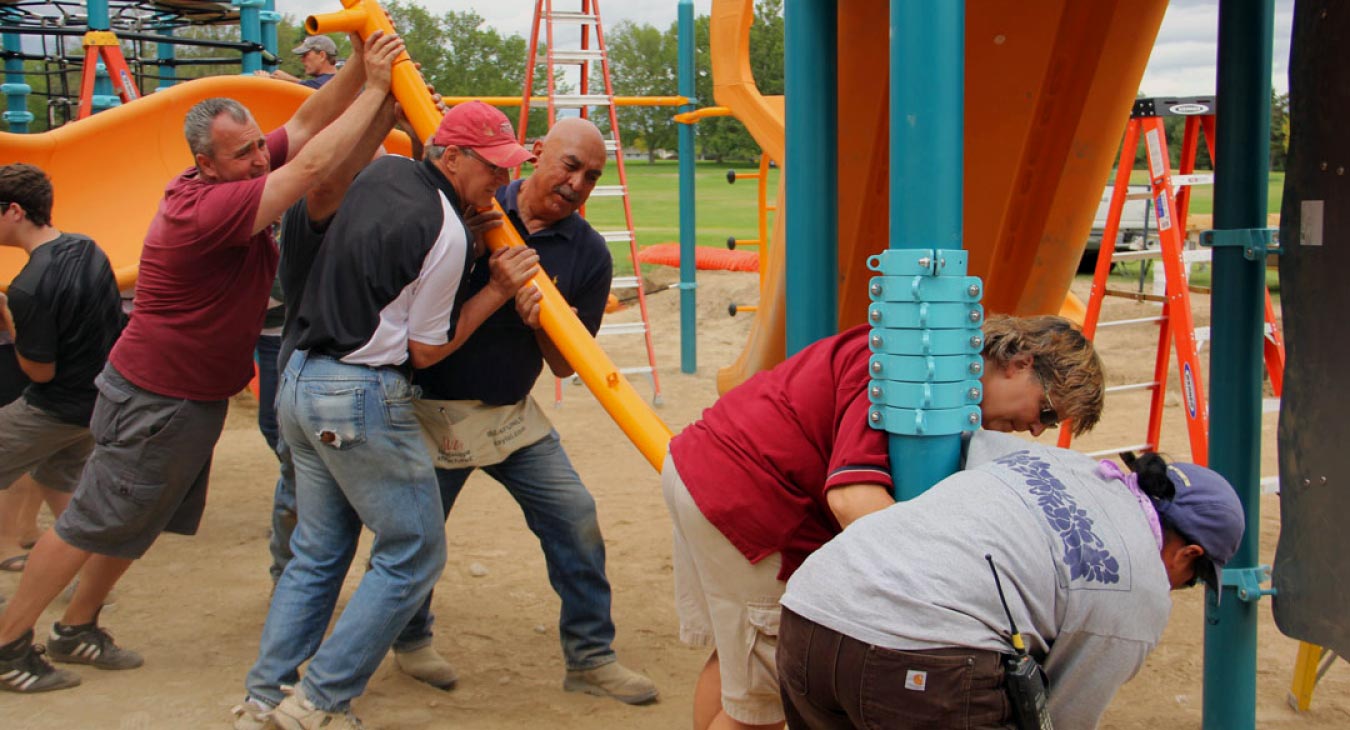With the array of bespoke designs available, commercial shade structures marry beauty and functionality, giving you a practical business space at half the cost of solid-roofed spaces. They also grant your business recognition, facilitate natural airflow, and are energy efficient, meaning the environment under the shade is typically comfy and pleasant for everyone.
But like everything else, commercial shade structures wear out with time. Proper maintenance is the antidote to making yours last longer. But how do you maintain a commercial shade structure? This comprehensive guide will tell you.
Commercial Shade Structure Maintenance Tips
Most commercial shades are designed to last ten years and more. Here are handy commercial shade structure maintenance tips to help you ensure it stays as long as it’s intended:
1. Commercial Shade Maintenance Starts with Quality and Proper Installation
Where and how you install a commercial shade structure affects how it serves its purpose and its longevity. For instance, a commercial shade installed in an area of direct, prevailing winds wears out quicker than one mounted in a tranquil garden due to wind damage.
And because commercial shades often require a dedicated anchoring point (some even need solid concrete ground installation), you must choose a good spot for installation. Here are a few key factors to prioritize while selecting a commercial shade mounting location:
- The sun’s position: The size and location of a commercial shade structure offers changes throughout the day based on the sun’s position. Remember, the sun’s direction shifts from day to day and from one season to another. So, choose an installation location that favors your purpose based on the sun’s position.
- Wind direction and strength: A commercial shade structure installed in a highly windy area wears out quicker. So while the sun’s position is an essential factor in selecting the ideal location for your shade, take the wind’s direction and strength into account too.
- Building approvals: Even if you find a perfect spot, check with the local authorities to confirm there are no building regulations or dog-friendly tenancy restrictions that might hinder or get you in trouble for installing your commercial shade structure.
As mentioned earlier, how you install your shade structure also affects its longevity. In that light, here are some pointers to guide you through installation:
- Consider shade sail installation design: While horizontal shade installation offers the most shade, it exposes your sail to pooling rainwater, bird droppings, and other debris that collect on it over time, conversely staining and damaging it. In some instances, the damage may even extend to the mounting posts. So, prioritize the sail installation design as it affects how long it lasts and your commercial shade maintenance efforts in the long run.
- Post footers: Like the sail, how you install a shade’s post footers affects its stability and longevity. Ensure your footers are installed on the sturdy ground and are firmly rooted in it. All connections should be tightly secured to the relevant points too.
2. Regular Inspection is Equally of Essence
Choosing a proper commercial shade installation spot and installing it the right way is a step in the right direction, but it’s not enough. To properly maintain your shade and ensure it remains in good shape longer, you need to inspect it for damage regularly. This helps you catch and fix problems before they get out of hand and become too costly. Check out the parts you should inspect:
- The fabric: Continuous exposure to the elements and chemicals like chlorine can cause your shade sail’s fabric to break down prematurely and wear out. Therefore, it is critical you regularly inspect the fabric for stains, scratches, tears, and other weaknesses in its structure. Check for frays along the seams and joins and signs of damage from the environment, such as tears caused by branches and birds. Catching these early helps you prevent further damage and saves you potential repair and replacement costs
- The posts: Ensure these are structurally sound and that they’re firmly rooted in the ground. If there are any signs of leaning or wobbling, reinforce the posts immediately. If you’re using wooden posts, check for rotting, and if any, replace them. If your shade features iron posts, check for rusting and spray an anti-rust agent if necessary. If much of the column has already rusted away, consider replacing it since a weak commercial shade post puts everyone’s safety at risk.
- Commercial shade hardware: Even commercial shade features hardware such as cable. The cable runs around your commercial shade’s perimeter and significantly contributes to its structural integrity by maintaining tension. If the cable is broken or damaged, your shade’s fabric tends to sag. During your inspection, check for rust or signs of damage on the cable. Check its tension whenever time allows, and try to replace it every two years. While inspecting the cable, check out other shade accessories such as cable clamps, commercial brackets, and pulley and ensure they’re well-secured and structurally sound.
3. Removing the Fabric during Bad Weather also helps
The sail is an essential part of any commercial shade structure, and due to its wide surface area, is also the most susceptible to damage. Removing the sail fabric during harsh weather such as during storms and snow prevents it from being rained on, torn, or even blown away by strong winds in such weather.
Here are some more commercial shade fabric maintenance tips:
- Ensure proper storage: Taking the fabric down during bad weather only helps with adequate storage. In that light, remove it carefully to prevent jamming, and ensure it’s dry as storing it damp causes mould growth. Roll it loosely before storage since folding it causes creases that might damage its coat. Have someone help you fold and carry it for storage, as dragging it around might cause scratches and tears. Check the storage surface for any sharp objects that might damage it too.
- Check the tension: Loose shade sails tend to sag and wrinkle out fast. They’re also prone to mechanical failures that will void your warranty and compromise the safety of those beneath the shade, which is even worse for business. Check the fabric’s tension, and tighten it whenever necessary.
- Trim overhanging tree branches: Trees encroaching a commercial shade structure may damage it in several ways. The leaves and other tree debris falling on the sail may cause permanent stains that result in premature breakdown of its fabric. Also, the overhanging branches may scratch and tear the sail during strong winds. Trim overhanging tree branches to prevent this from happening.
- Keep your sails away from fire: Although quality commercial shades come with a quality sail fabric, it’s not fire-proof. While installing your commercial shade structure, avoid spots near grills, and don’t hold BBQs beneath it. Sparks from such fires leave unsightly and expensive holes to repair, while smoke causes soot to form on the sail’s fabric.
- Take photographs during inspection: Take and maintain a photographic record of the sail every time you inspect it. These photos make maintenance a tad easier since you can easily compare them after every fabric inspection to determine if the quality is changing, why and what to do next.
4. Remember to Protect Commercial Shades from Human Damage
Commercial shade structure damage is sometimes a result of human behaviors. Cigarette burns on the fabric, missing posts and shade accessories, and rubbish around the shade’s posts are clear signs someone is mistreating your structures.
To prevent your commercial shade maintenance efforts from going down the drain, protect your shades from human damage too. Consider installing surveillance cameras or even removing access points to deter such individuals from vandalizing your investment.
Cleaning the System
Because they’re left exposed to the environment, commercial shade structures accrue dirt and grime, making them look older. A thorough, occasional cleaning is the easiest, most effective way to restore your shade’s amazing appearance. Check out the cleaning tips below:
Removing and Washing the Fabric
Before fabric removal, ensure you have the following:
- A large area: To spread out the fabric. Check that there aren’t any sharp objects that may tear it
- An extra hand(s): Removing and cleaning the fabric is no easy work. It’s a good idea to have a partner or two to help you with the process
- A large bucket of water
- A hose on low-pressure settings
- Mild detergent
- Washing sponge
- Auto polish
Although the sail is an essential part of any commercial shade structure, it’s also the most delicate. You need to remove its fabric carefully so you don’t damage it. Mark the turnbuckle thread and one corner of the sail so it’s easier to restore it later. Carefully unclip the D-rings, carabiners or commercial brackets attaching the sail to its mounting posts from each corner.
Lay your sail on the chosen area, and ensure you stretch it out as much as you can so you can clean every part. Using a low-pressure setting, spray clean the fabric with clean water to loosen the bird droppings, level, and other dirt and grime that may have stuck on the sail over time.
Fill your bucket with a water and detergent solution, and using a sponge or soft scrub brush, scrub the fabric all over. Since commercial shade structures are typically large, you may have to stop after every few feet to rinse the fabric. Once the material is entirely scrubbed, hose it off under low pressure to rinse it off. Leave it to dry and later auto polish it to maintain the integrity of the powder coat finish.
As for the commercial shade columns, wiping them down using a wet cleaning sponge or hosing them down under medium pressure is usually enough to get the grime off. However, ensure you treat them for rust after cleaning if they’re metallic to prevent rusting.
What if My Fabric has Mold?
If, for some reason, your fabric has Mold or mildew, follow the steps below to clean it:
- Hose spray the affected area and leave it for a while to open up the pores and allow the solution to break down the Mold and mildew
- Using a soft scrub brush, gently scrub the affected area to remove the Mold
- Hose down the area again to remove any extra dirt and to rinse it off
- Spread the fabric out and leave it to dry
How Often Should You Clean the Sail Fabric?
Try to clean your sail fabric every 2 to 3 months to remove dirt and grime and keep it looking aesthetically clean. But to keep the sail fabric looking clean until the next routine cleaning, try to sweep off debris like leaves, dust and bird droppings using a broom every week.
Shade Sail Fabric Cleaning Dos and Don’ts
- Do clean on a sunny day for easy drying
- Do use a sponge or soft scrub brush to wipe away the dirt as a rough cleaning item will cause micro-scratches on the fabric
- Don’t use pressurized or steam water to clean the fabric, as this will easily damage the powder coating
- Don’t use abrasive or caustic detergents, as this will also damage the coated finish
Touch-up Painting
Touch-up painting your commercial shade structure gives it an instant facelift, especially if it was already fading. Besides aesthetics, some paints also help maintain the integrity of the powder coating finish on the structure.
However note, you cannot use any random paint. Commercial shades are often painted using acrylic paints since it helps maintain the flexibility of the fabric after it dries out. Depending on the material of the fabric, you may even have to mix a fabric medium with the paint.
Consult your manufacturer for specifics on repainting your shade to avoid voiding your warranty. While at it, check out the general steps to follow while touch-up painting your commercial shade structure:
- Remove the fabric as explained in the cleaning steps above. You can always paint it in place, but you’ll need a ladder. Plus, it’s difficult, dangerous and is a task best assigned to professionals
- Clean the fabric first and leave it out until it is 100% dry
- Mix your paint with the relevant fabric medium
- Apply the paint using a standard paintbrush
- Leave it to dry for about 24 hours before restoring it
While choosing paint colors for sail paint touch-ups, remember colors like red and yellow fade faster than others. Most manufacturers even offer a separate warranty when you buy commercial shade structures with such colors. So, if you want to ensure your touch-up paint on commercial shade lasts longer, it’s best to use darker paint colors.
What’s Wrong with Using Interior Paint for Touch-Ups?
Although it’s tempting to use the can of paint sitting around your home for touch-ups and skip paint buying costs, we strongly recommend against it. Because it’s used on surfaces such as walls, regular interior paints tend to dry more rigidly and may cause cracks and tears on your fabric, especially during windy weather.
Also, most interior paints aren’t designed to stand up against the elements. They will quickly fade out on exposure to UV rays and rainwater, leaving your fabric looking ugly and old and even more exposed to the elements too.
More Commercial Shade Maintenance Tips
Here are even more commercial shade maintenance tips to help you uphold the integrity of your shade and keep it looking its best for longer:
Get a Shade Cover
Removing the shade sail during windy and extreme weather helps protect it from damage caused by these elements, but what about sun damage? UV rays are the biggest cause of commercial shade damage. Continuous exposure causes the rays to break down the powder coating, making the fabric even more susceptible to damage.
Consider getting a commercial shade cover to cover your shade during summer or if you live in a hot climate. It’ll reduce the impact of the summer heat on your shade, protect it from harmful UV rays, and keep the area beneath it even cooler.
Consider Professional Commercial Shade Maintenance
While conducting your commercial shade maintenance saves you cash, it’s good to bring in professional shade maintenance experts for demanding tasks such as cleaning and painting. Here’s why:
- Unlike you, they’re professionally trained: Shade maintenance experts from a reputable company are often trained for the job. They know how to remove and restore the sail fabric carefully and what to do in case of challenges such as the turnbuckles jamming during removal
- They come fully equipped: These experts often come fully equipped with all the equipment they need to safely remove and restore your shade, as well as maintain other parts. If any of the posts are leaning, they’ll have the tools to reinforce it, and if the shade hardware is rusted or damaged, they’ll replace it for you. They even carry repair items so they can fix any scratches and tears they might find on your sail.
- They’ll offer you tips: Professionals from a reputable company do more than clean. They share advice and helpful maintenance tips that you can use to make your shade structure last longer.
You don’t have to hire professionals every time you carry out your routine maintenance, but calling them once every year is a good idea.
Why Commercial Shade Maintenance is of the Essence
Commercial shade maintenance is the secret to aesthetically pleasing, longer-lasting shade structures. It also helps maintain your warranty. Hopefully, our comprehensive guide above will make the maintenance process easier for you.



